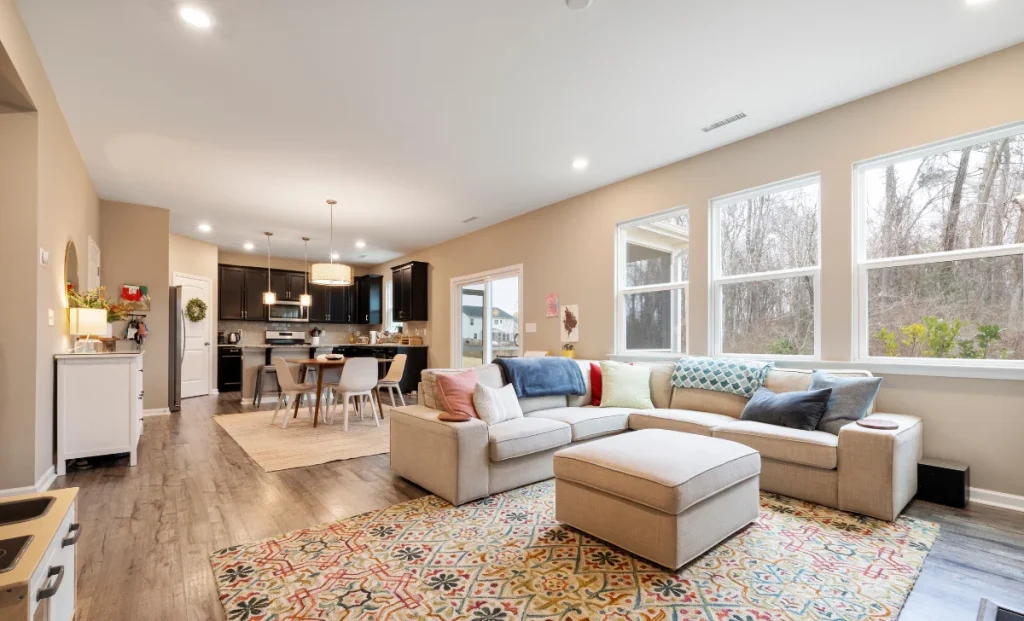5 Proven Home Improvements That Boost Value

Investing in the right pre-sale upgrades can significantly impact your final profit. While many projects offer a solid return, the key is choosing those that today’s buyers value most without overspending.
According to the 2025 Remodeling Impact Report, projects with high “Joy Scores” like kitchen upgrades often translate to buyer happiness and better offers. Below are five data-backed improvements that reliably boost resale value.
Upgrade #1: Minor Kitchen Remodel (Mid-Range)
The kitchen is usually seen as a home’s center, and potential buyers are very attracted to updated, practical kitchens. You can create a major improvement without a complete rebuild by concentrating on noticeable surface updates. These targeted updates create a fresh, appealing look that resonates in listing photos and in person.
Focus on projects that deliver maximum visual appeal for a mid-range budget. Consider repainting or re-facing cabinet boxes and swapping dated hardware for sleek matte-black or brushed-nickel pulls. Installing a water-saving, pull-down faucet and energy-efficient stainless steel appliances are other small changes that modernize the space and improve its appraisal value.
Key Insight: The secret to a high-ROI kitchen remodel is focusing on cosmetic updates. Refreshing surfaces like cabinets and hardware captures buyer interest without the over-investment of a full gut renovation.
Upgrade #2: Bathroom Refresh
Buyers scrutinize bathrooms almost as closely as kitchens, so a clean and updated look is crucial. To make a strong impression, focus on refreshing surfaces and fixtures that may appear dated. This approach maximizes your budget while addressing the features potential buyers notice first.
You can get a luxury look for less by having your existing tiles professionally refinished instead of replaced. Replacing builder-grade vanity lights with modern LED sconces can dramatically improve listing photos.
Furthermore, installing low-flow toilets and WaterSense-rated faucets reduces utility bills, an appealing selling point echoed by initiatives like the Tenderloin Neighborhood Development Corporation’s strategy, which resulted in annual savings of over 24 million gallons of water.
Upgrade #3: Curb-Appeal Boost-Siding & Entry Door Replacement
Home shoppers make up their minds about a property in the first few seconds after seeing the outside. New siding and a stylish, secure entry door ensure that impression is positive and signals a “move-in ready” property. This upgrade consistently ranks among the highest for ROI because it directly impacts a buyer’s initial perception of quality and maintenance.
When comparing materials, consider both performance and aesthetics. Fiber-cement siding resists fire and insects and holds paint for up to 15 years, while premium vinyl costs less up-front and performs well in wet climates.
Pick a front door color that fits with the area’s style, and be sure to maintain a yard that is free of pests. When local pests threaten your curb appeal, professional Bug Zapper Pest Control services in Portland ensure ants and rodents won’t compromise your pristine new façade.
Pro Tip: First impressions form in seconds. A new entry door and siding immediately signal a well-maintained, move-in-ready home, justifying their high ROI before a buyer even steps through the door.
Upgrade #4: Energy-Efficient Windows
With rising utility costs, buyers scrutinize a home’s energy efficiency more than ever. The U.S. Department of Energy has shown that improved building practices lead to significant savings, and ENERGY STAR-certified windows are a key component of this. Emphasizing the opportunity to lower energy costs for heating and air conditioning can be a powerful sales feature.
When selecting frames, consider your local environment for the best long-term performance. For instance, in humid zones, composite frames that resist warping are a smart choice. In snowy regions, triple-pane glass helps mitigate condensation and heat loss, adding to the home’s overall comfort and value.
Upgrade #5: Attic or Basement Conversion to Usable Living Space
Adding finished square footage can vault your home into a new price bracket, but only if local comparable sales justify the investment. Before starting construction, it’s essential to confirm all local requirements to ensure the space is legally recognized as habitable.
This includes verifying egress window sizes, meeting insulation R-values for your climate zone, and pulling all necessary electrical and structural permits. For staging, consider converting the space into a dual-use office and guest suite to capitalize on the remote-work trend.
If your basement doubles up as a garage, focus on demonstrating functional storage. Installing specialized equipment, such as HeavyLift Direct’s sturdy garage lift, can free up floor area and visually demonstrate the extra capacity buyers crave.
Important: Never skip permits for attic or basement conversions. Unpermitted structural or electrical work is a major red flag for buyers and inspectors, capable of derailing a sale at the last minute.
Validating Your Upgrade Choices
A seasoned real estate agent provides invaluable market-specific insights, saving you from costly missteps. They can analyze which projects command price-per-square-foot premiums in your ZIP code and advise on optimal timing to capture peak demand.
Their expertise helps create a pricing strategy that recoups your renovation spend without over-pricing the home for the market.
Before starting any work, it’s smart to meet with a minimum of three different real estate agents. Ask each one for a market report that includes the value your intended improvements would add. This method, based on real numbers, will help you feel sure about your decisions and spend your money with certainty.
The Bottom Line
Small, strategic upgrades frequently provide a better financial return than large, extensive renovations. Data shows that kitchen facelifts, new siding, and a fresh entry door consistently top the ROI charts.
Ground every decision in local market data, keep future buyers’ needs front-of-mind, and consult with professionals before committing your time and money.

